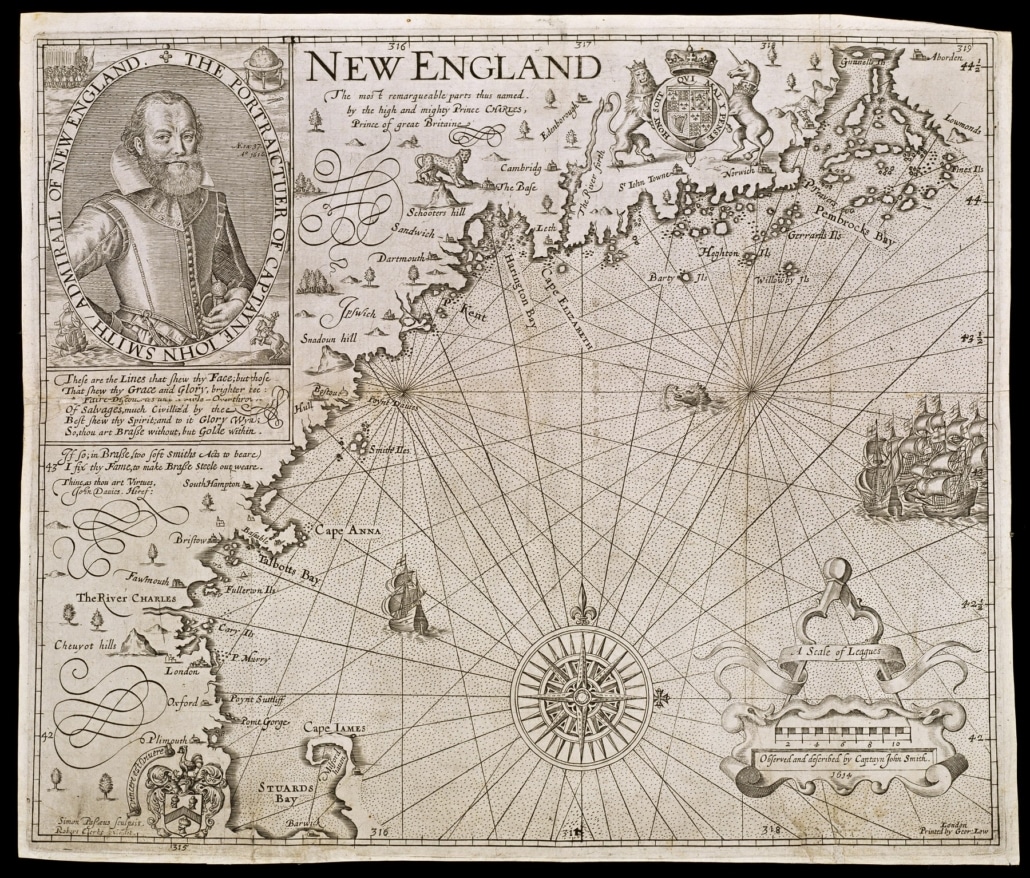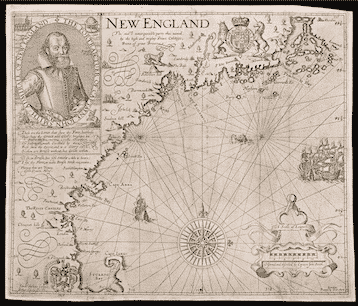
WILLIAMSBURG, Va. – Ever since the first attempts by the English to colonize America, artists and mapmakers used maps as a savvy marketing tactic to portray the New World as both abundant and rich in land and resources, often portraying America as a latter-day Garden of Eden. A new exhibition, “Promoting America: Maps of the Colonies and the New Republic” will open on October 17, 2020, at the DeWitt Wallace Decorative Arts Museum, one of the Art Museums of Colonial Williamsburg, and will shed new light on this topic. Through 21 extraordinary objects, including maps (several of which have never before been exhibited in Colonial Williamsburg and a few of which are recent acquisitions), prints, glass transfers, books and more, visitors will gain insights into how the promise of a good and prosperous life in the New World was communicated. The exhibition, the first in a new gallery dedicated to maps, prints and drawings in the recently expanded Art Museums building, will remain on view through March 27, 2022.
“More than cartographic records, early maps are often pieces of propaganda,” said Roald L. Hurst, the foundation’s Carlisle H. Humelsine chief curator and vice president for museums, preservation, and historic resources. “This exhibition allows guests to see how subtle messages were embedded into these everyday objects.”
At first, mapmakers included iconographic images of the flora, fauna as well as images of the native population of America as decorative elements to promote the promise of a life of opportunity there. By the 17th and 18th centuries, however, mapmakers used a variety of visual strategies to promote ideas and values intended to encourage laying claim to land in the New World.
“My favorite maps in the collection are the ones that tell us a much larger story rather than those that simply record the geography of a particular region. Each of the maps chosen for this exhibition was designed either to encourage immigration to America or to promote the vastness of America’s natural resources,” said Margaret Beck Pritchard, deputy chief curator at Colonial Williamsburg.
Among the highlights of the exhibition is a map of New England by Captain John Smith, its cartographer, and William Hole, its engraver. Originally published in 1616, this line engraving on laid paper was printed in London in 1624. After charting the New England coastline, Smith returned to England with valuable geographic information and great enthusiasm for establishing a colony at Plymouth. As English interests had moved from one of discovery and exploration of the New World to establishing settlements and claiming land there, Smith labeled this map with recognizable English names rather than meticulously identified Indian towns as he used six years earlier in his map of Virginia (also included in the exhibition). Instead of illustrations of Natives as seen in the Virginia map, this chart of New England featured an impressively large self-portrait of Smith.
“The decorative details on these maps sometimes contradict the conflicted and often violent colonization of North America, but they made Europeans familiar with and curious about the “New World,” encouraging settlement and investment,” said Katie McKinney, Colonial Williamsburg’s Margaret Beck Pritchard assistant curator of maps and prints. “The evolution of the symbols over time tells a powerful story about how iconography can reflect and embody cultural ideas and ambitions.”
Another featured map in Promoting America is Herman Moll’s A New and Exact MAP of the DOMINIONS of the KING of GREAT BRITAIN on ye Continent of NORTH AMERICA, published after 1753, and first published by Thomas and John Bowles in 1715. Map decoration was often used to reflect the economic potential for prospective settlers through depiction of America’s abundant natural resources. From the early 17th century, beaver pelts were the primary commodity for trade and a main source of competition between the French and the English in America. Moll’s illustration of the Industry of ye Beavers promoted American settlement. Since industry was known to create wealth and beavers were known to be industrious, the animals represented the potential for American success with “great order and wonderfull Dexterity.” The scene also features an early view of Niagara Falls, which would come to symbolize pride in America’s vast untamed wilderness and promote a vision for its future. After the American Revolution, the falls became a nationalistic symbol for the New Republic.
In the early 18th century, English concern over French exploration of the Mississippi Valley encouraged new North American map production as officials and colonists alike needed accurate records of the continent’s land, waterways, forts, and settlements. Maps were also essential for domestic political reasons because they delineated and legitimized boundaries and helped to define British economic interests. Illustrating these points in the exhibition is A MAP of the BRITISH EMPIRE in AMERICA with the FRENCH and SPANISH SETTLEMENTS adjacent thereto made by London cartographer Henry Popple in 1773. Several features of Popple’s map reveal the motivation behind its production. The sheer size of the map suggested England’s dominant role in America. It was the largest printed map of North America made before the Revolution. The title appears to be etched onto a stone tablet upon which British holdings were identified as part of her “empire,” but French and Spanish holdings were described as “settlements.” The Native American on the left of the decorative cartouche points to the title as if to confirm the assertion that the area represented belonged to Britain, while the figure on the right points to the thriving commercial activity along the shore.
The latest dated map in Promoting America is another highlight of the exhibition: Henry Schenck Tanner’s A MAP OF NORTH AMERICA, made in Philadelphia in 1822. This map, considered to be the most significant of the American West produced during the early 19th century, incorporated information from discoveries made by Merriwether Lewis and William Clark (1804-06), Zebulon Pike (1806) and Stephen H. Long (1819-20). The Lewis and Clark expedition following the purchase of the Louisiana Territory in 1803 and Thomas Jefferson’s commission for the men to map the region and find a route across the continent, furthered the belief that success of the new nation was tied to exploration and cultivation of the frontier. As Herman Moll’s decorative details in his map of North America showed a century earlier, by early in the 19th century, natural wonders were regarded as symbols of Americans’ national pride. The cartouche on Tanner’s map combined images of both Niagara Falls and Virginia’s Natural Bridge along with other symbolic forms of American fauna such as a rattlesnake, a beaver, and an eagle.
Promoting America: Maps of the Colonies and the New Republic is co-curated by Ms. Pritchard and Ms. McKinney. It will be on view in the The Michael L. and Carolyn C. McNamara Gallery and was generously funded by Rex and Pat Lucke.

Colonial Williamsburg reopened at reduced capacity and has followed site-specific safety guidelines as part of the foundation’s COVID-19 business resumption plan and in accordance with the state’s plans for reopening. During Colonial Williamsburg’s reopening, most interpretive programming has been moved outdoors. For the safety of employees and the public, ticketed guests can expect limited interaction with interpretive staff. Site entry is limited by state-mandated capacity guidelines for social gatherings, and guests are encouraged to proceed quickly through interpretive sites to accommodate as many visitors as possible.
Face coverings are required while inside foundation-owned buildings and their use is encouraged outdoors as well. Guests are also asked to adhere to social distancing guidelines during their visit to Colonial Williamsburg sites, when walking along Duke of Gloucester Street and in other publicly accessible areas. Most doors, faucets and other high-traffic touchpoints are now touchless, and there are significantly enhanced cleaning protocols throughout the foundation’s open locations.
Additional information about the Art Museums and Colonial Williamsburg as well as tickets are available online at colonialwilliamsburg.org, by calling (855) 296-6627 and by following Colonial Williamsburg on Facebook and @colonialwmsburg on Twitter and Instagram.
# # #


